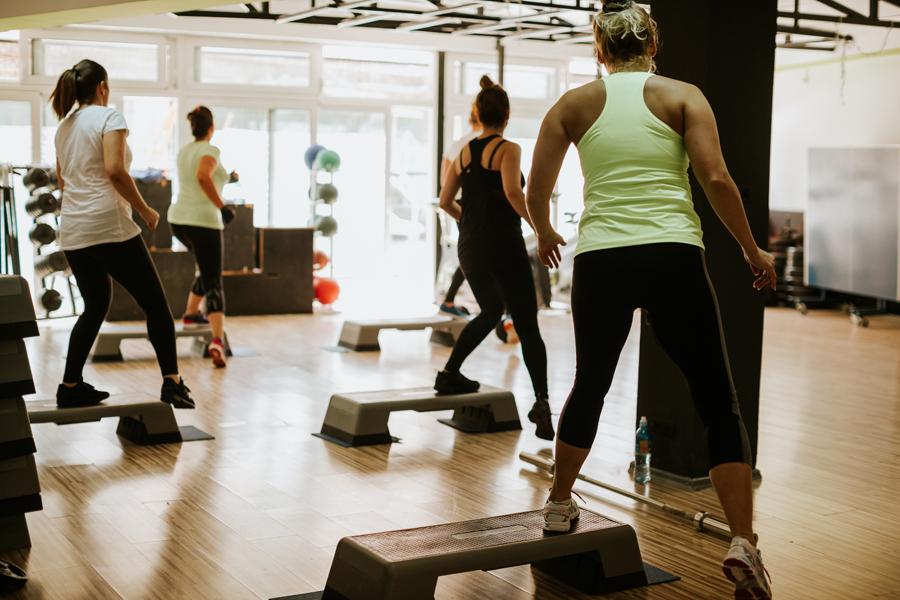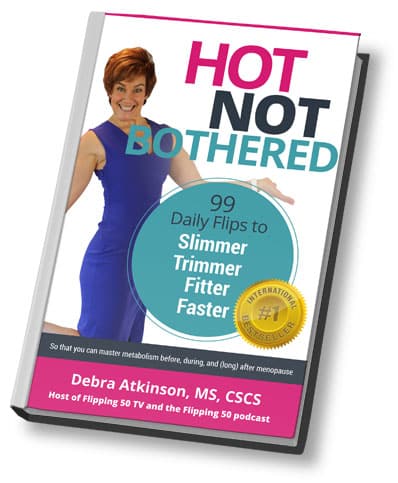Are you doing too much high intensity exercise? High Intensity Interval Training (HIIT) has been the holy grail of fitness trends for the past several years. Is it the Holy Grail for YOU? Here’s what a recent study says and how to interpret that if you’re a woman flipping (or wanting to) her second half with flare.

Exercise is stress. High intensity exercise is greater stress. Stress causes cortisol.
Cortisol plays two roles in our lives. It’s both the stress hormone and the energy hormone. The perfect amount of stress makes you feel alive and thrive. Too little or too much cortisol each causes problems.
When you’re exercising with the right amount of “overload” or stress you create a positive, not negative, stress response. That’s not to say (because I hear you saying that’s how you negate stress) that exercise doesn’t relieve stress. It can. But we sometimes don’t give ourselves the right dose, frequency or intensity to optimally relieve stress without having it come back to bite us you-know-where.
Better Stress
The key is to find your personal optimal exercise. I’m an advocate for the right exercise for you right now. Women in midlife are more susceptible to the negative effects of stress as they go through other major hormone changes. What worked once – even as recently as months ago or last week – may not be your ideal exercise this week.
That doesn’t mean you’re going to suffer, gain weight, get moody or any of the above. If you adjust your exercise according to what’s going on, respond to it even if you can’t predict what changes will be, you’ll sail through those years from peri-menopause to beyond menopause better. That sets you up for a full Flipping 50 (49-99) feeling as young as your habits will allow you. It’s habits that determine how your genetics express or suppress (epigenetics).
What’s the best exercise? The answer is not the same for you and for every other woman over 50. We’ve got common denominators but your details are unique to you. If you’re deconditioned, conditioned, or an athlete it changes your exercise prescription. If you’re in adrenal fatigue, you’re estrogen dominant, or have low testosterone will change what I suggest you do. If you have osteoporosis, are trying to prevent it, or you have 20 or more pounds to lose, each of these (and more) will change the exercise plan that’s best for you.
A recent study of weight training performed as high intensity interval training (HIIT) was created to determine if HIIT weight training was better than traditional weight training. Researchers asked, is heavy weight training better than the moderate-to-light weight training recommended for decades?
A side note here: the fear of “bulk” from strength training is legit. The three sets of 10-to-12 repetitions taught for decades, as some kind of gold standard actually IS a bulk-building protocol. Ten or fewer repetitions is the optimal strength, bone building, and fat reducing/lean increasing protocol while higher repetition ranges are best for performance enhancement and influencing smaller muscle activation.
Your personal exercise protocol is also influenced by whether you’re a mesomorph, endomorph, or ectomorph. Each body type can respond differently to a protocol.
ACE Research
According to the study performed by the American Council on Exercise, a leading authority in fitness, moderate or average exercise should occur between 70 to 80 percent heart rate intensity, HIIT training requires at least 85 percent heart rate intensity, the study says. Les Mills’ researchers (creators of Body Pump) wanted to determine how to best achieve a healthy balance between one’s HIIT volume (minutes of HIIT per week) and one’s positive stress response. Their hypothesis was that more than 30 or 40 minutes of weekly HIIT volume would prompt a reduced positive stress response.
“A positive stress response to exercise is a critical part of creating the bio-chemical changes in the body that help build new muscle and improve fitness,” the study says. “The stress response can be measured effectively by examining cortisol and testosterone concentrations in saliva.”
Not to repeat myself but as mentioned earlier, this is really what we refer to as the principle of overload in fitness. The stimulus of exercise must be adequate to provide overload such that the body responds after (when between sessions fitness occurs IF you have adequate rest, food, and sleep).
 Remember Your Hormones
Remember Your Hormones
It’s key for YOU to remember, Flipping 50 friend, that you have another thing to consider. The status of your hormones, not just of your mind’s desire to lose fat, or get in shape needs to be considered when designing your exercise program. Pushing through … following lame social media memes suggesting that “sweat is fat crying” can backfire on you and increase fat storage when stress goes the wrong way. When you read “move more” interpret it as walking down the hall to deliver a message as opposed to going to boot camp 6 days a week or doing two-a-days.
Let me take a step back here and describe what it feels like to lift at a level defined as HIIT. There’s a lot of confusion about HIIT. Anything that gets you breathing slightly harder is NOT HIIT. Lifting with a weight that causes fatigue at 10 repetitions correlates with 80% intensity. So in order to lift and a HIIT level of 90% as per the study, you’d be lifting a weight closer to 5 repetitions.
Don’t panic. You definitely progress to this point. You also can reduce the weight slightly and use power, increasing speed on the lift but always controlling the lowering (eccentric) phase of exercise to achieve this overload without a heavy weight. You do this in daily life… the wind grabs the car door, the door to a store is heavy, or you heft the garbage bag out to the curb… so if you’re worried about injury (valid) do consider whether your daily activity warrants the work so you’re prepared.
Fatigue vs Tired
Moving fast to get breathless is not necessarily overloading the muscles in a way that muscle changes and creates lean muscle tissue that assists in fat burning.
THIS is a key distinction most program creators and attendees fail to make. Going to a boot camp where you’re moving fast from a strength exercise to a cardio exercise to a core exercise will likely tire you. Tired is not muscle fatigue. Muscle fatigue must be reached so your body changes.
Will it burn calories right now? Yes. Will it change your body, your body composition, and set you up for years of a stronger leaner body? No.
The study used strength training as the mode of high intensity exercise. Researchers compared one set of 5 repetitions for each of 10 exercises to 1 or 2 sets of 10 repetitions for 10-12 exercises. The subjects were both male and female and ages up to 59.
The results showed body fat decreased significantly for both groups. Blood pressure and LDL (bad) cholesterol decreased only for the HIIT group.
“When it comes to HIIT, adding volume doesn’t deliver better results,” the report says.
“It actually hinders. To get the full benefits of HIIT and prevent overreaching, our recommendation is to…
Do a maximum weekly HIIT sessions that are above 90 percent maximum heart rate for 30-40 minutes…
…and balance them with other less demanding workouts.”
“It’s also imperative that you let your body recover properly after a HIIT session. This way, you’re likely to perform better when you do your HIIT workouts and benefit from the positive results,” researchers added.
The key exercise flips:
- More is not better when it comes to High Intensity exercise
- An understanding of what constitutes high intensity interval training is key if you’re to reap benefits
- The more health markers (blood pressure and cholesterol) you’re trying to target with your exercise, the more HIIT could benefit you done with adequate progression
- A low volume of HIIT (no more than 40 minutes a week) is far better for results (and reduction of injury) than more volume (frequency, or duration)
- If you’re doing high intensity exercise that is also high impact cardio or high intensity strength training every day you may be inhibiting your recovery and results.
This distinction of when to work hard and when to recovery is so important. It’s not intuitive for a generation that witnessed the work harder, get better results discipline of our parents.
Article reprinted with permission from Debra Atkinson. Originally printed on flippingfifty.com.
Debra Atkinson is the #youstillgotitgirl who is flipping 50 and changing the way thousands of women think about their second half. She’s the host of the Flipping 50 TV Show and the Flipping 50 podcast. As a master personal trainer, strength and wellness coach with over 30 years fitness industry experience, she works with women who are pro-aging with vitality and energy. She is an international fitness presenter, author of hundreds of articles and multiple books. Visit her website, flippingfifty.com
